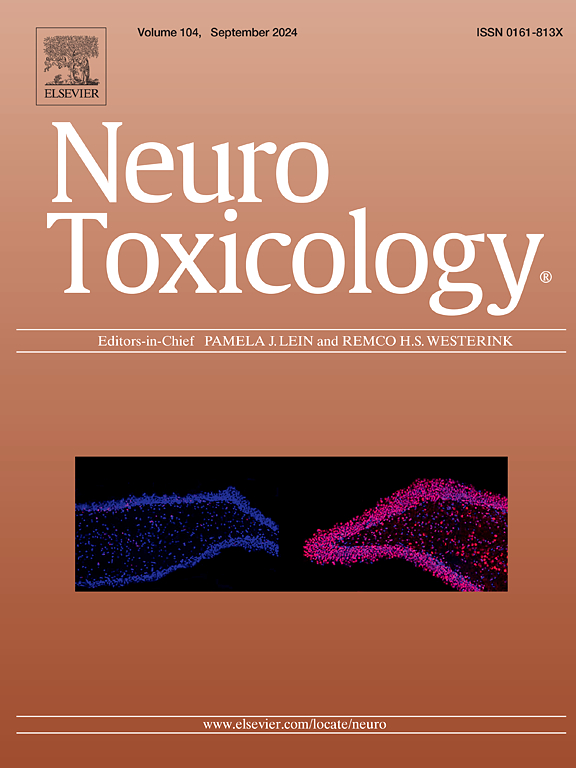ATF5-mediated mitochondrial unfolded protein response protects against Pb-induced mitochondria damage in SH-SY5Y cell
IF 3.9
3区 医学
Q2 NEUROSCIENCES
引用次数: 0
Abstract
Mitochondria is the primary target of lead (Pb) in neural cells, and Pb exposure can cause impairment to mitochondrial function and morphology. Recent studies have reported that a conserved cellular stress response, called mitochondrial unfolded protein response (mtUPR), is activated in response to mitochondrial dysfunction and protein misfolding and play protective roles in aging and neurodegeneration, but it’s unknown whether mtUPR could protect against Pb-induced neurotoxicity. In this study, we found that sublethal level exposure of PbAc (2.5 μM) could cause mitochondria damage and then activate mtUPR by promoting the expression of mitochondrial proteases (LonP1 and ClpP), molecular chaperone (HSPA1A). ATF5 mediated mtUPR activation as knocking out ATF5 significantly inhibited Pb-induced LonP1 and ClpP expression. Moreover, ATF5 deficiency exacerbated Pb-induced mitochondrial morphological and oxidative phosphorylation (OXPHOS) functional damage, resulting in oxidative stress and ultimately promoting cell death. Conversely, overexpression of ATF5 confers protection against Pb-induced oxidative stress and cell death. Collectively, thess results highlight that mtUPR mediated by ATF5 safeguards against mitochondria damage caused by Pb exposure, providing insights into the development of new strategies for mitigating the Pb neurotoxicity.
ATF5 介导的线粒体未折叠蛋白反应可保护 SH-SY5Y 细胞免受铅诱导的线粒体损伤。
线粒体是神经细胞中铅(Pb)的主要靶标,暴露于铅可导致线粒体功能和形态受损。最近有研究报告称,线粒体未折叠蛋白反应(mtUPR)是一种保守的细胞应激反应,它在线粒体功能障碍和蛋白质错误折叠时被激活,并在衰老和神经退行性变中发挥保护作用。在这项研究中,我们发现亚致死水平的 PbAc(2.5μM)暴露可导致线粒体损伤,然后通过促进线粒体蛋白酶(LonP1 和 ClpP)、分子伴侣(HSPA1A)的表达激活 mtUPR。ATF5 介导了 mtUPR 的激活,因为敲除 ATF5 能显著抑制铅诱导的 LonP1 和 ClpP 的表达。此外,缺乏 ATF5 会加剧铅诱导的线粒体形态和氧化磷酸化(OXPHOS)功能损伤,导致氧化应激,最终促进细胞死亡。相反,过表达 ATF5 可保护细胞免受铅诱导的氧化应激和细胞死亡。总之,研究结果强调了 ATF5 介导的 mtUPR 可防止铅暴露引起的线粒体损伤,为开发减轻铅神经毒性的新策略提供了启示。
本文章由计算机程序翻译,如有差异,请以英文原文为准。
求助全文
约1分钟内获得全文
求助全文
来源期刊

Neurotoxicology
医学-毒理学
CiteScore
6.80
自引率
5.90%
发文量
161
审稿时长
70 days
期刊介绍:
NeuroToxicology specializes in publishing the best peer-reviewed original research papers dealing with the effects of toxic substances on the nervous system of humans and experimental animals of all ages. The Journal emphasizes papers dealing with the neurotoxic effects of environmentally significant chemical hazards, manufactured drugs and naturally occurring compounds.
 求助内容:
求助内容: 应助结果提醒方式:
应助结果提醒方式:


